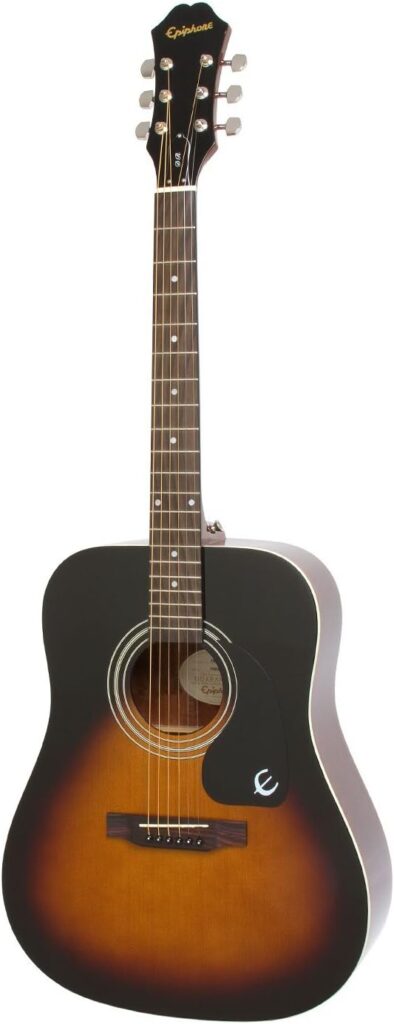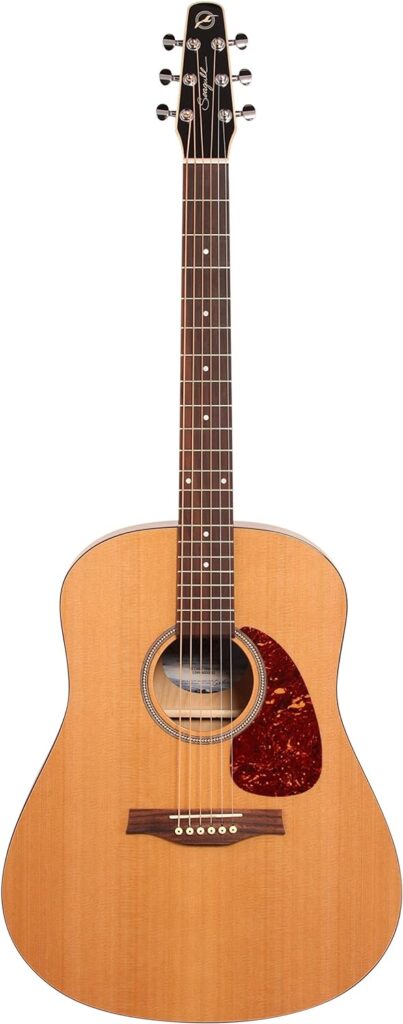Embarking on the journey of learning to play the guitar is an exciting and rewarding endeavor. For beginners, choosing the right acoustic guitar is crucial to ensure a smooth and enjoyable learning experience. In this comprehensive guide, we will explore the best acoustic guitars tailored for beginners, accompanied by buying guides, essential considerations, and frequently asked questions to help you make an informed decision.
Choosing the Perfect Acoustic Guitar: A Buying Guide for Beginners
1. Budget Considerations
Determining your budget is the first and foremost step in finding the best acoustic guitar. Fortunately, there are excellent options available for beginners at various price points. Consider allocating a budget between $200 and $600 for a quality instrument that will serve you well as you progress in your musical journey.
2. Body Type and Size
Acoustic guitars come in various body types and sizes, each offering a unique sound and playing experience. Beginners often find comfort in guitars with smaller bodies, such as concert or folk shapes. These designs are generally more manageable for those still developing their playing techniques.
3. Tonewoods
The type of wood used in the construction of the guitar significantly influences its tone. Common tonewoods include spruce, cedar, mahogany, and rosewood. A solid spruce or cedar top is ideal for beginners, as it provides a balanced and versatile sound.
4. Neck Profile and Fingerboard
The neck profile and fingerboard play a crucial role in the playability of the guitar. Opt for a guitar with a comfortable neck profile and a smooth fingerboard. A slim neck profile is often preferred by beginners, as it allows for easier fretboard navigation.
5. Action and Playability
Action refers to the distance between the strings and the fretboard. Low action makes it easier to press down on the strings, facilitating smoother playability for beginners. Adjustable truss rods are also beneficial, allowing you to fine-tune the neck’s curvature according to your preference.
6. Brand Reputation and Reviews
Researching and considering reputable guitar brands is essential. Brands like Yamaha, Fender, Epiphone, Seagull, and Taylor are known for producing quality instruments for beginners. Reading customer reviews and testimonials can provide valuable insights into the real-world experiences of other players.
Top Picks: Best Acoustic Guitars for Beginners
1. Yamaha FG800

The Yamaha FG800 consistently stands out as an excellent choice for beginners. With a solid spruce top and nato/okume back and sides, it offers a rich and resonant tone. The slim neck profile enhances playability, making it comfortable for beginners. Priced under $300, the FG800 strikes a perfect balance between quality and affordability.
Pros:
- Solid spruce top provides a rich and resonant tone.
- Nato/okume back and sides contribute to a well-balanced sound.
- Slim neck profile enhances playability for beginners.
- Excellent build quality and durability.
- Budget-friendly, priced under $300.
Cons:
- Some players may prefer a slightly wider neck for fingerstyle playing.
2. Fender CD-60S

Fender’s CD-60S is a classic option for beginners, featuring a solid mahogany top for warm and vibrant tones. The easy-to-play neck and rolled fingerboard edges ensure a comfortable playing experience. Priced under $300, the CD-60S combines affordability with the renowned craftsmanship of Fender guitars.
Pros:
- Solid mahogany top offers warm and vibrant tones.
- Comfortable neck and rolled fingerboard edges enhance playability.
- Classic Fender aesthetic with a well-built construction.
- Priced under $300, providing affordability with renowned craftsmanship.
- Suitable for various playing styles and genres.
Cons:
- Heavier build compared to some other models.
- Some users may prefer a gloss finish over the satin finish.
3. Epiphone DR-100

The Epiphone DR-100, a sister brand of Gibson, offers a budget-friendly acoustic guitar with a select spruce top and mahogany body. With a price tag under $200, the DR-100 provides a balanced and resonant sound, making it an excellent choice for beginners seeking quality on a budget.
Pros:
- Select spruce top and mahogany body provide a balanced and resonant sound.
- Slim-tapered neck design facilitates smooth transitions between chords.
- Budget-friendly option, priced under $200.
- Respected Gibson brand association.
- Ideal for beginners looking for quality on a budget.
Cons:
- Some players may prefer a slightly larger body for enhanced projection.
4. Seagull S6 Original

For those willing to invest a bit more (around $600), the Seagull S6 Original stands out with a pressure-tested cedar top and wild cherry back and sides. Crafted in Canada, this guitar produces a warm and nuanced sound, showcasing the quality synonymous with Canadian craftsmanship.
Pros:
- Pressure-tested cedar top and wild cherry back and sides produce a warm and nuanced sound.
- Canadian craftsmanship ensures high build quality.
- Unique headstock design adds visual appeal.
- Excellent tonal balance for a mid-range price (around $600).
- Well-suited for both fingerstyle and strumming.
Cons:
- Slightly higher price point may be a consideration for budget-conscious beginners.
5. Taylor GS Mini

The Taylor GS Mini, priced around $600, challenges the notion that high-quality guitars come with a hefty price tag. Featuring a solid mahogany top and layered sapele back and sides, this compact guitar delivers a surprisingly rich and full sound. The scaled-down design makes it an excellent choice for beginners seeking a premium playing experience.
Pros:
- Solid mahogany top and layered sapele back and sides deliver a rich and full sound.
- Compact size is comfortable for beginners and great for travel.
- Premium Taylor quality in a more affordable package (around $600).
- Versatile for various playing styles.
- Exceptional build quality and attention to detail.
Cons:
- Higher price point compared to other beginner options.
- Some players may prefer a larger body for enhanced projection.
Things to Remember When Buying Acoustic Guitars for Beginners
Try Before You Buy
Whenever possible, try out the guitar before making a purchase. Visit local music stores and spend time playing different models to find the one that feels most comfortable and sounds right to you.
Consider Additional Accessories
Factor in the cost of additional accessories such as a gig bag or hard case, a tuner, extra strings, and a guitar stand. These accessories are essential for maintaining and protecting your investment.
Take Advantage of Beginner Packages
Some brands offer beginner packages that include not only the guitar but also essential accessories at a discounted price. These packages can be a cost-effective way to start your musical journey.
Research and Compare Prices
Take the time to research and compare prices across different retailers. Online platforms often provide competitive pricing, but don’t forget to check local music stores for potential deals and personalized assistance.
Explore Used Options
High-quality used guitars can be a budget-friendly alternative. Check reputable sources, such as music stores, online marketplaces, or classified ads, for well-maintained pre-owned instruments.
Frequently Asked Questions (FAQ)
Can I learn to play the guitar on my own?
Absolutely! Many beginners successfully learn to play the guitar through online tutorials, instructional books, and practice. However, taking lessons from a qualified instructor can significantly accelerate your learning process.
How often should I change my guitar strings?
The frequency of string changes depends on your playing habits. As a general guideline, consider changing your strings every 3-6 months or sooner if they start to lose their brightness or show signs of wear.
Do I need a specific type of pick for an acoustic guitar?
While personal preference plays a role, medium-gauge picks (around 0.7mm to 1.2mm) are a good starting point for acoustic guitars. Experimenting with different picks can help you find the one that suits your playing style.
What is the break-in period for a new acoustic guitar?
New guitars may require a break-in period as the wood adjusts to the tension of the strings. Playing the guitar regularly and keeping it properly humidified can expedite this process.
How important is humidity for maintaining an acoustic guitar?
Humidity is crucial for the health of an acoustic guitar, as extreme dryness or humidity can lead to issues like cracking or warping. Aim for a relative humidity level between 40% and 60% to keep your guitar in optimal condition.
Conclusion: Striking the Right Chord in Your Musical Journey with Best Acoustic Guitars for Beginners
Choosing the best acoustic guitar for beginners involves a careful consideration of budget, features, and personal preferences. Whether you opt for the budget-friendly Yamaha FG800, the classic Fender CD-60S, the affordable Epiphone DR-100, the mid-range Seagull S6 Original, or the compact Taylor GS Mini, each guitar offers a unique blend of quality, playability, and affordability.
Remember to take your time, try out different guitars, and prioritize comfort and playability. Additional considerations like tonewoods, neck profile, and brand reputation can guide you towards the perfect instrument for your musical journey. Utilize the buying guide

